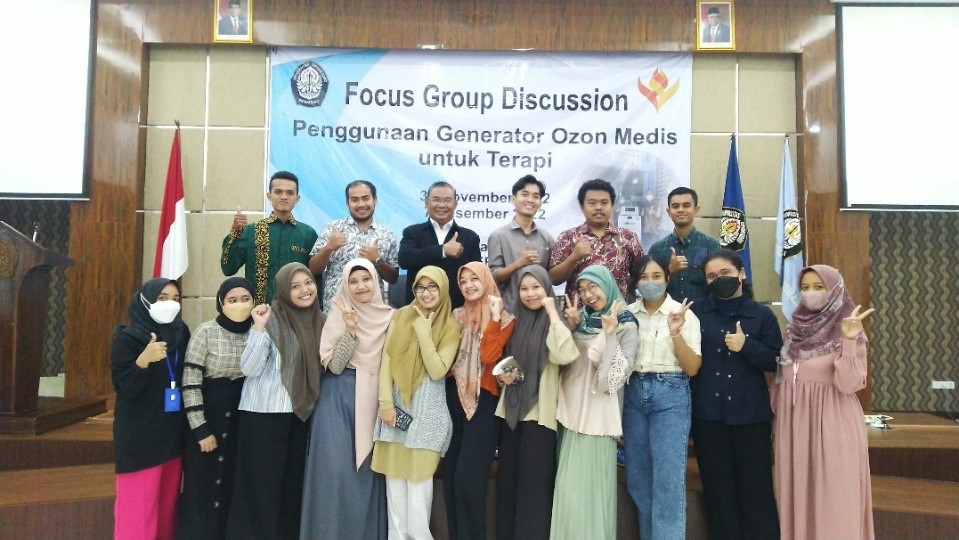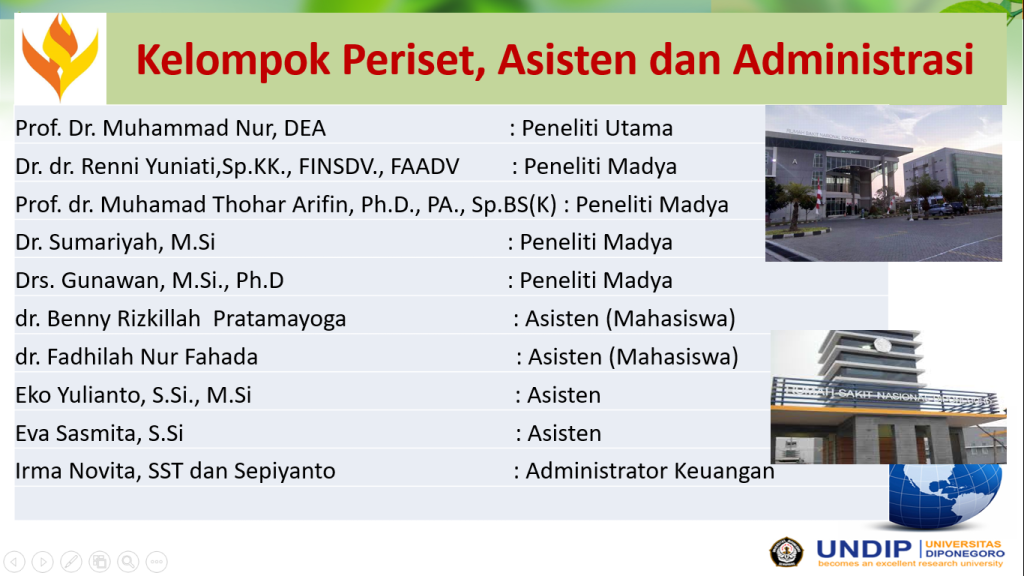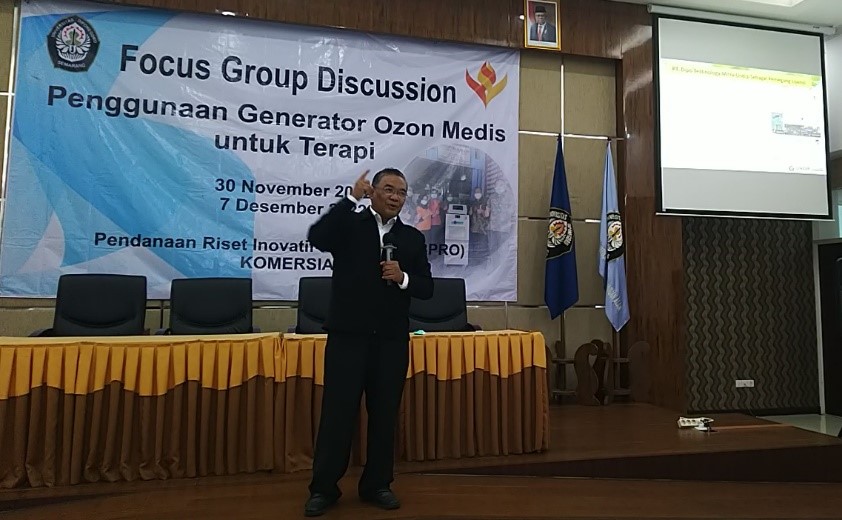Continued Part 1.
Mr. Ricky Prawira, a nurse from Palembang who studied Master of Nursing at Diponegoro University, responded whether there is a standard operating procedure (SOP) in the use of medical ozone generators for DM wound therapy. The explanation regarding this SOP was delivered by Doctor Benny and also Doctor Fadhilah in response to questions from graduate students who are also nurses. The standard operating procedure for the use of medical ozone generators has referred to the recommendations of the international scientific committee on ozone therapy which includes 4 things. First, ozone doses for high dose categories ranged from 80-90 mg/l for 5 minutes at the beginning of treatment, and low dose criteria ranging from 25-30 mg/l for 20 minutes were given in the second treatment and so on. Second, this technology has used a double dielectric barrier so that there is no contact between the reactive oxygen species (ROS) and the electrode so that no contaminants enter the DM wound. Third, input gas as the basic material for ozone formation using oxygen with medical standards. Fourth, this medical ozone generator has also been equipped with ozone destruction so that the safety of nurses and patients is maintained from ozone exposure.
In the final session, Mrs. Niken Safitri, a lecturer in nursing at Diponegoro University as well as the administrator of the Central Java chapter of the wound care association, was pleased to share her experience of DM wound care. The use of ozone dissolved in olive minyal media as a spreading agent in DM wounds also provides positive confirmation of the healing process of DM wounds. The treatment of ozozone olive oil can help dm wound heal well and the results are also smooth. This can be an alternative solution in home care services with residences in remote areas that do not allow carrying large medical ozone generators. At the same time, it is also a challenge for future innovations to create a medical ozone generator that is lightweight, easy to carry and carry everywhere during home care services.
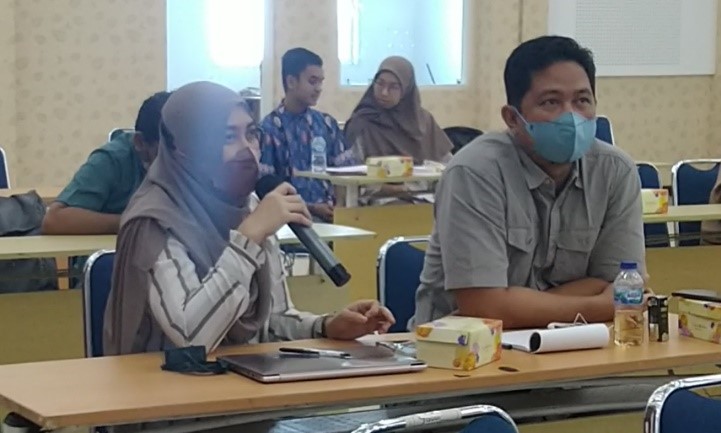
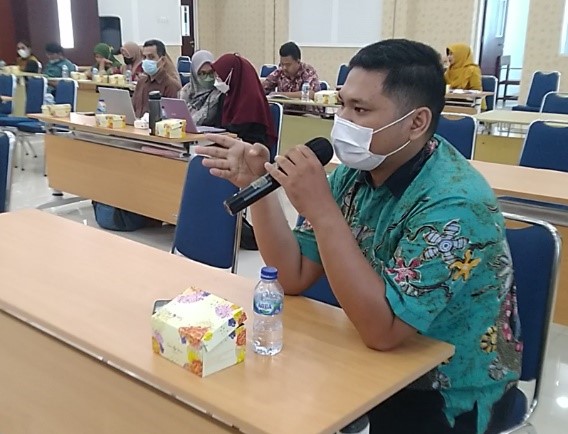
The Focus Group Discussion (FGD) with the theme “The Use of Medical Ozone Generators for Therapy” was also carried out a week earlier, namely Wednesday, November 30, 2022, with a single speaker, Prof. Dr. Muhammad Nur, DEA. The first FGD was attended by master’s students of Medical Physics, Diponegoro University. Prof. Nur conveyed many stages of research, especially plasma technology at the Faculty of Science and Mathematics, ranging from toys on tables by S1 students to the twists and turns of it becoming a technology product that is eliminated and commercialized. The plasma research center (CPR) has produced at least 4 plasma-based technologies.First zeta green, an air purifier technology that uses plasma corona discharge technology, this technology is able to reduce the spread of the Cobid-19 virus based on testing in a BSL-3 level laboratory in East Java. Secondly Deozone, ozone plasma technology to help extend the shelf life and freshness of horticultural products and has spread in at least 9 provinces in Indonesia. Thirdly Seaozone, an appropriate technology that can be applied to the ship’s hatch to maintain the freshness of catch fish and reduce lost products. The fourth M-ozone, is the first medical ozone generator in Indonesia that also has international standards, because it refers to the recommemdation standards issued by the international scientific committee of ozone therapy. The only technology in the Faculty of Science and Mathematics that received funding from RISPRO Commercial LPDP, is expected to be able to contribute to technological innovation in the health sector in Indonesia. This medical ozone generator is expected to be an alternative to help the healing process of diabetes militus wounds which still occurs in various regions. Ozone therapy has been shown to help accelerate DM wound healing and reduce the risk of amputation. (ey)
